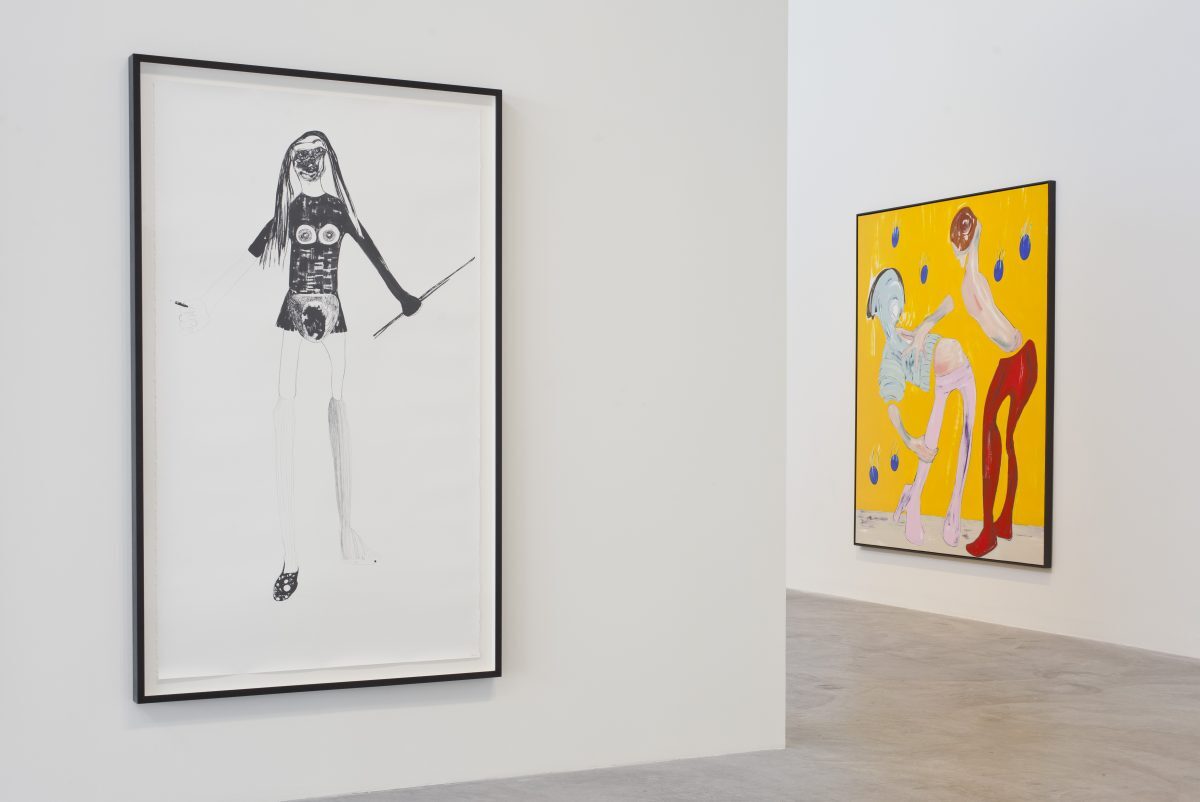Upon first glance, British-born artist Nicola Tyson’s portraits may call to mind words like ‘ghoulish’ and ‘child-like.’ While viewers may be able to discern a human figure, the bodies and features are so distorted that it’s impossible to determine what the subjects look like. This is because Tyson is far less interested in conveying the physical appearance of her subjects than her own subconscious’ perception of them. If Tyson’s drawing method seems odd, it’s because she uses a strategy she calls “psycho-figuration” that allows her subconscious to take control of the art-making process.
Art students may recognize this as similar to automatic drawing, a method used by the Surrealists where the artist takes no conscious control of the drawing, but tap into their intuition and draw shapes and lines as if in a daydream. Only after the drawing is completed does the artist try to find some recognizable elements within their scribbles. Tyson’s work differs in that she does have a specific object/subject in mind when she begins to draw, but she frees herself from any pressure to create a “good drawing, and merely draws as her mind dictates. Once the drawing is complete, she goes back and completes the image with shading or paint to finish it.
Are you ready to tap into your subconscious? Make your own psycho-figuration portrait by following the instructions below.
Download the PDF instructions here.
Materials:
- paper (the bigger, the better)
- graphite or charcoal pencil
- colored pencils, paint, or crayons (optional)
Instructions:
Step 1: Decide who you want to draw. Is it your mother? Your brother? A random person? Someone you saw in a dream?
Step 2: Clear your mind and let go of the desire to create a traditionally correct piece of artwork.
Step 3: Start making marks on paper. Don’t stop, pause, or think about it! Just keep making long marks and keep moving!
Step 4: Follow these suggestions: don’t lift your pencil from the paper until you determine you’re done. Use your nondominant hand!
Step 5: Stop drawing when it feels right. Make more. This kind of drawing gets better with practice.
Step 6: Add finishing touches with shading or color
